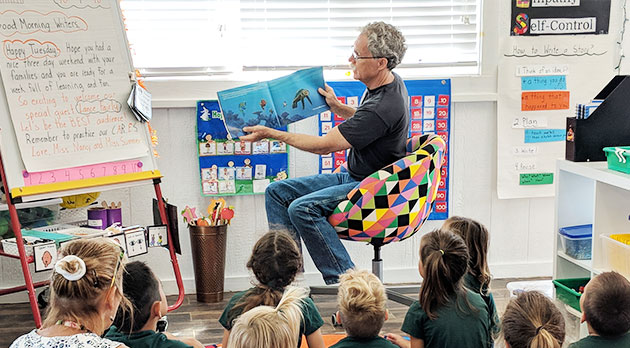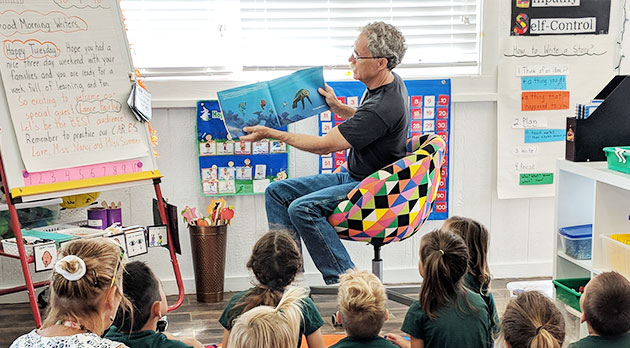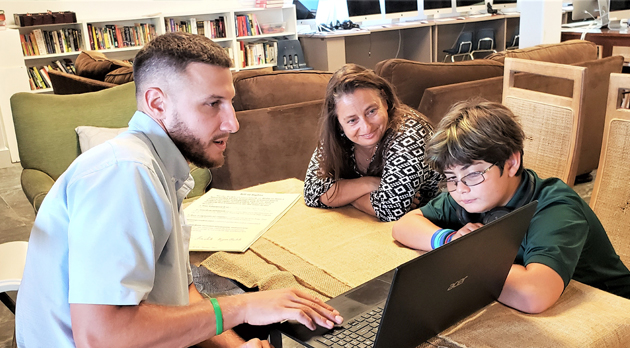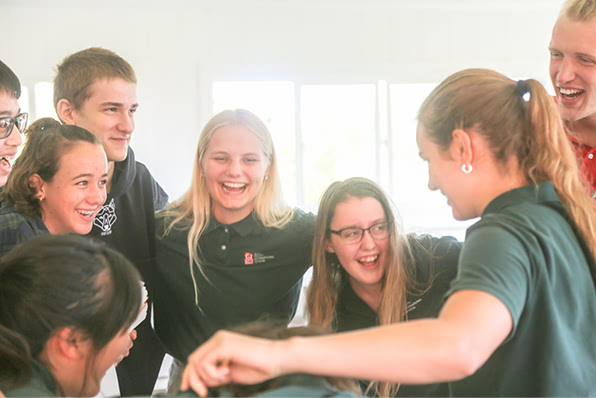
How Can I Help My Child To Be a Good Reader?
One of the many things that I am very proud of APIS's educational program is its emphasis on building strong literacy skills in our students. Our elementary division has instituted the balanced literacy program, which we implement in our Writing Workshops and Reading Workshops. Our secondary division has its own unique creative writing program. It gives ample opportunities for our students to write and to get feedback from peers and teachers to improve their writing skills.
In this post, I would like to share an important article on educational leadership written by Richard Allington from the University of Tennessee and Rachael Gabriel from the University of Connecticut. The authors present six high-quality practices they believe all children should daily if they are to become successful, engaged readers. The points they stress are precisely the same foundational beliefs that underlie APIS’ literacy program. I would like to summarize them for you because they help increase insight into our literacy program and, inadvertently show how cutting edge the educational program is at APIS!
• Every child reads something he or she chooses.
"The research base on student-selected reading is robust and conclusive," says Allington and Gabriel. "Students read more, understand more, and are more likely to continue reading when they have the opportunity to choose what they read."
• Every child reads accurately.
This means reading the material at the "just right" level of difficulty. Spending more time reading doesn't help unless students are reading at 98 percent or higher accuracy. "When students read accurately, they solidify their word-recognition, decoding, and word-analysis skills," says Allington and Gabriel. "Perhaps more important, they are likely to understand what they read and, as a result, will enjoy reading."
• Every child reads something he or she understands.
According to Allington and Gabriel, comprehension is the goal of reading instruction. "But too often, struggling readers get interventions that focus on basic skills in isolation, rather than on reading the connected text for meaning. This common misuse of intervention time often arises from a grave misinterpretation of what we know about reading difficulties," they said. Brain research showed that struggling readers aren't wired differently. Their brains benefit from high-quality reading instruction with engaging and understandable content. In conclusion, more authentic reading develops better readers.
• Every child writes about something personally meaningful.
"The opportunity to compose continuous text about something meaningful is not just something nice to have when there's free time after a test or at the end of the school year," said Allington and Gabriel. "Writing provides a different modality within which to practice the skills and strategies of reading for an authentic purpose."
• Every child talks with peers about reading and writing.
Research shows that conversations with classmates improve comprehension and engagement with texts as students analyze, comment, and compare, thinking about what they read. "Time for students to talk about their reading and writing is perhaps one of the most underused, yet easy-to-implement, elements of instruction," said the authors.
• Every child listens to a fluent adult read aloud.
Listening to a competent adult modeling good reading helps students with vocabulary, background knowledge, sense of the story, awareness of genre and text structure, as well as comprehension.
Lastly, I would add that listening to adults fluently read aloud advanced books can be a helpful strategy for children who are skilled readers. I don't read to my middle school children anymore, but we often listen to audiobooks together when we drive to school. Honestly, they are forced to listen to it since dad has the audio command. Not only is this an opportunity to expose them to advanced literature but also a good way to prompt a conversation on interesting topics.
Reference:
Reference: Allington, R., & Gabriel, R. (2012, March). Every Child Every Day. Educational Leadership, Vol. 69, #6, p. 10-15.











